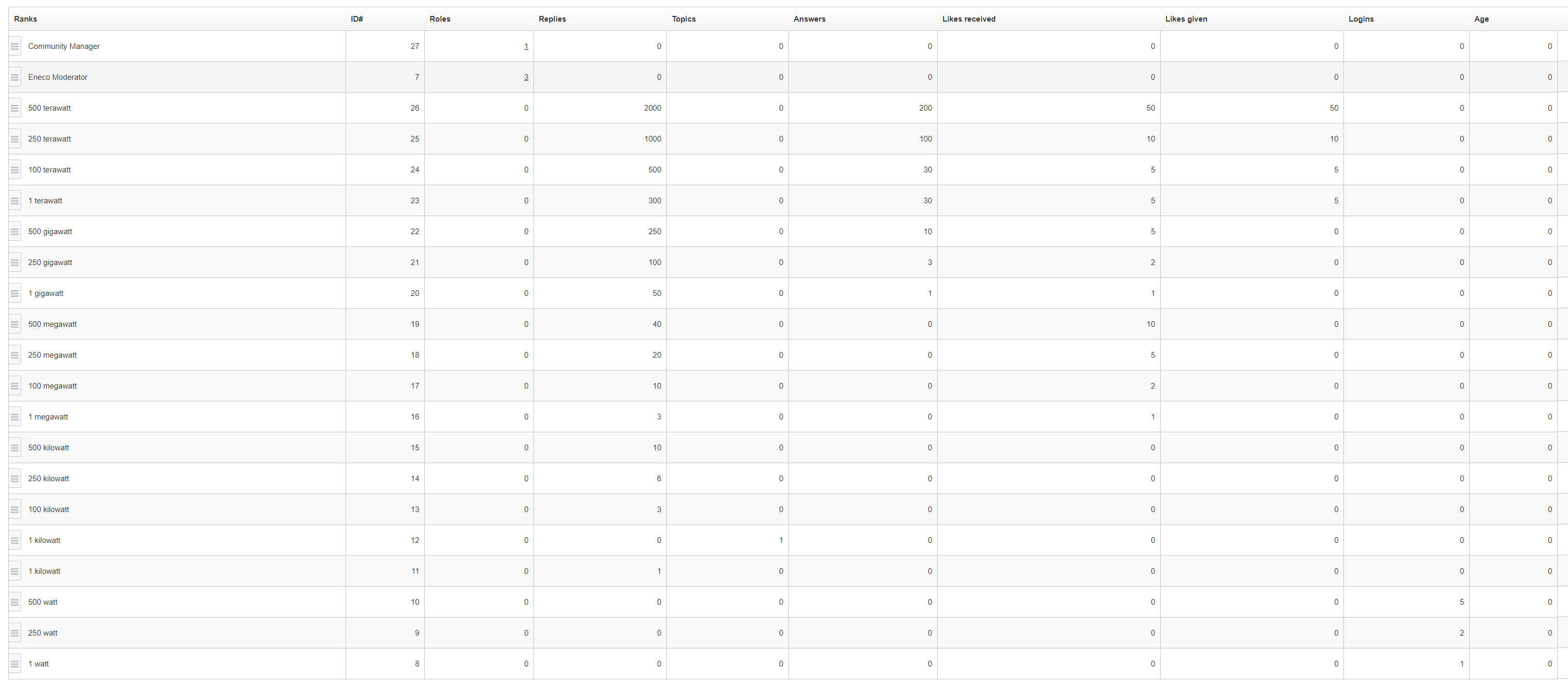Hey Stéphan,
Great to hear that you want to review your current rank structure!
To quickly answer your question: No, 19 ranks is not too much. 🙂 Other established communities can have more than 30 ranks, depending on their strategy. So don't be too worried about this.
Rank names:
I find it very hard to find good names for ranks, always used to struggle with it. Names for ranks
ideally should follow a number of principles:
- Users should be able to tell directly if a user owns a higher / lower rank
- Names should be related to the company / context of your community
- Names should be fun / playful
What others often do is adding several layers to a rank:
- Genius (Bronze) / Genius (Starter) / Genius (Level 1)
- Genius (Silver) / Genius (Intermediate) / Genius (Level 2)
- Genius (Bronze) / Genius (Advanced) / Genius (Level 3)
That maybe takes away the pressure to come up with more than 15 different names. ;)
When I was working on the TomTom Communities, I also found it difficult to find navigation-related rank names. Ditte (now rocking Sonos communities like a boss) came up with a set of names for the ranks which were good, however you might also find that they were not super clear for the users:
- Seekers (Beginner rank)
- Travelers
- Explorers
- Wayfarers
- Trailblazers
- Navigators
- Pioneers
- Vanguards
- Voyagers (Expert rank)
Each of those had three sub-levels (with the same rank name, but different attributes like
bold or
underlined), so that we could spread them more.
About the rules:
I always try to imagine how a user would travel through the ranks. Try to think in use cases: Imagine you are a customer who has a question. How will the rank structure respond to his/her activity?
Doing so, I have found that the "megawatt" ranks are a bit problematic. Let's say a user has made three posts. He will receive the "100 kilowatt" rank. If a user likes one of these posts, he will automatically receive the "1 megawatt" rank. This might confuse users (as users do not know why they receive a new rank now).
To work against that, you might want to remove or replace at least the first two megawatt ranks, so that they do not have the same # of posts as the kilowatt ranks.
This is the biggest "issue" I have found with the ranking, having a quick look.
Some more general thoughts on ranking structures:
There is no single, correct setup for all communities. However, there are some general principles which most of us here probably will agree with:
- In the lower ranks, users should rank faster compared to higher ranks
- Users should rank up faster for actions that support the goals of your community (e.g. # solutions for a support community, or # topics for engagement communities)
- Users should not be able to rank up too fast (e.g. three ranks within one day), you can achieve that by adding # of logins or age (seconds since registration)
Should you have more questions, or in case you want us to have a look at your reviewed structure, just let us know!
Cheers,
Julian

